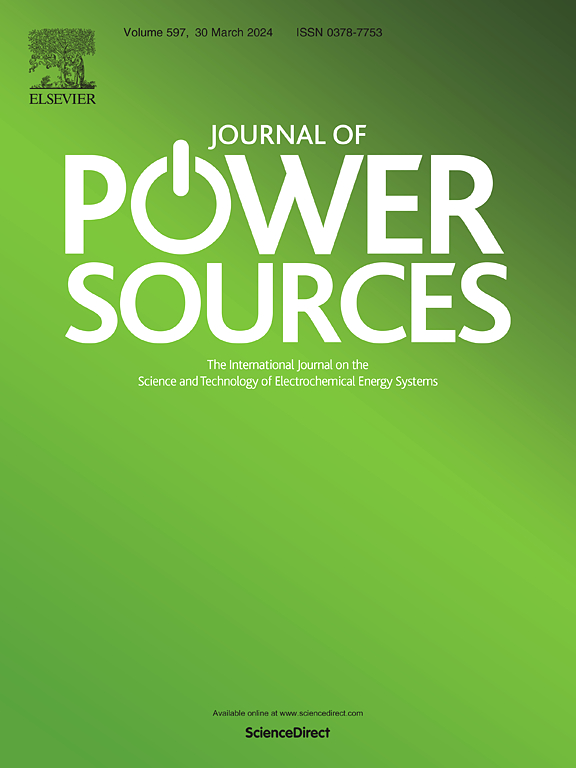Amide-based Al electrolytes and their application in Al metal anode-organic batteries
IF 8.1
2区 工程技术
Q1 CHEMISTRY, PHYSICAL
引用次数: 0
Abstract
Aluminum rechargeable batteries are seen as a next-generation battery technology based on abundant materials. However, the current standard Al electrolytes are based on expensive ionic liquids. In this paper, the potential use of three AlCl3/amide-based electrolytes is investigated as a low-cost alternative from the perspective of Al metal anode and organic cathode compatibility. Our investigation shows the promising electrochemical performance of amide electrolytes and specific differences between the electrolytes depending on amide alkyl chain length. In particular, amides with longer alkyl chains show better plating/stripping efficiency and lower overpotential compared to the shorter acetamide one. Similarly, organic cathode capacity retention is the best for the electrolyte with the longest alkyl chain. However, the cathode capacity retention is subpar to the standard ionic liquid-based Al electrolyte although it undergoes the same electrochemical mechanism of carbonyl bond reduction. Interestingly, there is no deterioration of the anthraquinone redox peak through the appearance of a side peak at a lower potential in amide-based electrolytes, which is observed in standard electrolyte based on ionic liquid. Amide-based electrolyte display promise for practical applicability, however, the low oxidation stability of amide-based electrolytes is identified as one of their key limitation and should be addressed in future work.
酰胺基铝电解质及其在铝金属阳极有机电池中的应用
铝充电电池被视为基于丰富材料的下一代电池技术。然而,目前标准的铝电解质是基于昂贵的离子液体。本文从铝金属阳极和有机阴极兼容性的角度出发,研究了三种 AlCl3/酰胺基电解质作为低成本替代品的潜在用途。我们的研究表明,酰胺电解质具有良好的电化学性能,而且根据酰胺烷基链长度的不同,电解质之间也存在具体差异。特别是,与较短的乙酰胺相比,烷基链较长的酰胺具有更好的电镀/剥离效率和较低的过电位。同样,烷基链最长的电解质的有机阴极容量保持率最好。然而,与基于离子液体的标准铝电解质相比,虽然羰基键还原的电化学机制相同,但阴极容量保持率却很低。有趣的是,在酰胺基电解质中,蒽醌氧化还原峰并没有像在基于离子液体的标准电解质中观察到的那样,在较低电位出现一个侧峰,从而导致蒽醌氧化还原峰恶化。酰胺基电解质显示出实际应用的前景,然而,酰胺基电解质的低氧化稳定性被认为是其主要局限性之一,应在今后的工作中加以解决。
本文章由计算机程序翻译,如有差异,请以英文原文为准。
求助全文
约1分钟内获得全文
求助全文
来源期刊

Journal of Power Sources
工程技术-电化学
CiteScore
16.40
自引率
6.50%
发文量
1249
审稿时长
36 days
期刊介绍:
The Journal of Power Sources is a publication catering to researchers and technologists interested in various aspects of the science, technology, and applications of electrochemical power sources. It covers original research and reviews on primary and secondary batteries, fuel cells, supercapacitors, and photo-electrochemical cells.
Topics considered include the research, development and applications of nanomaterials and novel componentry for these devices. Examples of applications of these electrochemical power sources include:
• Portable electronics
• Electric and Hybrid Electric Vehicles
• Uninterruptible Power Supply (UPS) systems
• Storage of renewable energy
• Satellites and deep space probes
• Boats and ships, drones and aircrafts
• Wearable energy storage systems
 求助内容:
求助内容: 应助结果提醒方式:
应助结果提醒方式:


